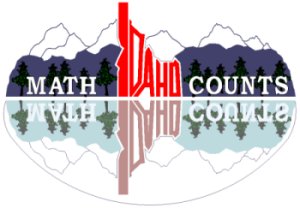|















| |
Idaho Society of
Professional Engineers
Friday Update – 11/19/10
What’s Inside:
• Upcoming Events
•
Call for ISPE Award Nominations
• MATHCOUNTS Problem of the
Week
WELCOME NEW
ISPE MEMBERS!!
Robert Pharmer – Southwest
Chapter
Teri Tyler – Southeast Chapter
In the News:
•
Why Are So Many Terrorists Engineers?
•
Cloaked - Why is engineering still a mystery to students,
and what does that mean for the next generation?
UPCOMING EVENTS:
 |
December 2, 2010 -
WTS International, Treasure Valley Chapter 2010 Awards Banquet - BSU
Student Union Building, Hatch Ballroom. Cocktails begin at 5:30 pm with dinner
at 6:30. |
 |
January 18, 2011 -
ISPE Southwest Chapter January Meeting - 12:00 Noon - Jeremy Kroll - The
Hartwell Corporation - "Risk Drivers: Understanding the Dynamics of Risk in
the A/E Industry" - URS Corporation Training Room |
 |
January 22, 1011 - 7th
Idaho Regional Future City National Engineers Week Competition - Boise
State University - Jordan Ballroom |
 |
February 10, 2011 -
ISPE Northern Chapter
MATHCOUNTS competition - North Idaho College, Coeur d'Alene |
 |
February 20-26, 2011 -
National Engineers Week |
 |
February 26, 2011 -
ISPE Southeast Chapter
MATHCOUNTS competition - Idaho State University, Pocatello |
 |
February 26, 2011 -
ISPE Southwest Chapter
MATHCOUNTS competition - Boise State University, Boise |
 |
March 12, 2011 -
ISPE State
MATHCOUNTS competition - Boise State University, Boise |
 |
April 26-27, 2011 -
2011 Project Development Conference - Boise Centre on the Grove - Boise ID
|
 |
April 29, 2011 -
ISPE Awards nomination deadline |
 |
May 6, 2011 -
National
MATHCOUNTS competition - Washington D.C. |
 |
June 9 & 10, 2011 -
ISPE 2011 Annual Meeting - Best Western Coeur d'Alene Inn, Coeur d'Alene, ID
|
IDABO EDUCATION INSTITUTE
– January 24 – 28, 2011
Nampa Civic Center, 311 3rd Street, Nampa, Idaho
Idaho Association of Building Officials Presents….
2009 Code Training and More!!

CALL FOR ISPE AWARD NOMINATIONS
Each year ISPE selects outstanding Idahoans in recognition of their
engineering accomplishments and contributions to the engineering profession.
Awards will be presented on June 10, 2011 during the
2011 Annual Meeting in Coeur d'Alene. Nominations must be submitted no later
than April 29, 2011. Award criteria and
nomination forms, as well as lists of previous winners, can be obtained from the
ISPE web site,
or by contacting the ISPE office at 208-426-0636.
The awards for which we are looking for nominees include:
Idaho Engineering Hall of Fame: Given by ISPE to recognize
Idahoans that have made engineering contributions beyond Idaho i.e. nationally
or world wide.
Idaho Excellence in Engineering Award:
To recognize an Idahoan who is distinguishing themselves in engineering.
Idaho Excellence in Engineering Educator Award:
This award recognizes an Engineering Educator who has had a significant impact
on the engineering profession in Idaho.
Young Engineer of the Year Award: To
recognize an engineer that is making a contribution to their profession. Must be
no more than 35 years old.
Self nominations are welcomed and encouraged.

MATHCOUNTS PROBLEM OF THE WEEK
Can you solve this MATHCOUNTS problem? The answer will appear in the next
edition of the Friday Update!
Making the Grade
At Smart Middle School students are required to take 7 classes each grading
period. At the end of each grading period a student is assigned a final grade
(A, B, C, D or F) for each class for the grading period. A student’s overall
grade point average for the grading period is determined using a 4-point scale,
where a final class grade of A is worth 4.0 points, a B is worth 3.0 points, a C
is worth 2.0 points, a D is worth 1.0 point and an F earns no points. Suppose
Jared has learned his final grade for the first grading period for six of his
classes. He earned a grade of A in two classes, a grade of B in three classes
and a grade of C in one class. What is the positive difference between the
highest possible overall grade point average and lowest possible overall grade
point average that Jared can have for his seven classes? Express your answer as
a decimal to the nearest hundredth.
-------------------------------------------------------------------------------
Given the previous information for Jared's first six grades, what is the lowest
possible letter grade that Jared can earn in his seventh class to have an
overall grade point average of at least 3.00 for the first grading period?
-------------------------------------------------------------------------------
On the last school day of the first grading period Michael learns his final
grade for each class. If order is not important and we know he has earned at
least 1 of each of the 5 letter grades, what is the total number of combinations
of 7 final grades (one for each class) that Michael can possibly receive for the
first grading period?
-------------------------------------------------------------------------------
Assume now that we do not know any of Michael's 7 final grades. If order is not
important, what is the total number of combinations of 7 final grades (one for
each class) that Michael can possibly receive for the first grading period?
Answer to last week’s problem:
Since the area Kelli wants to cover with stones is 2,510 square feet, we need to
divide this by 4 because that’s the number of square feet that can be covered by
each bag of stones. It will take 2510/4 = 627.5 = 628 bags of stones. Each bag
holds 50 pounds of stones, so the total number of pounds that would need to be
purchased to cover the shaded region is 628(50) = 31,400 lbs.
-------------------------------------------------------------------------------
From the previous question we know that Kelli will need 628 bags of the 50-lb
bags of stones to cover the region shown shaded. If each bag costs $48.50, it
will cost 628(48.50) = $30,458 to purchase the amount of stones needed from
Garden Mart. From the previous question we know that Kelli would only need the
amount of stones contained in 627.5 50-lb bags of stones to cover the desired
region. Thus, the total number of pounds of stones required is (627.5)(50) =
31,375 lbs. A ton is 2000 lbs, so if purchased from Garden Wholesaler, the first
two tons of stones would cost (4000)(1.50) = $6,000. Kelli would need an
additional 31,375 – 4000 = 27,375 pounds of stones. The cost for these stones
would be (27,375)(0.90) = $24,637.50. Therefore, the total cost to purchase the
stones from Garden Wholesaler would be $6,000 +
$24,637.50 = $30,637.50. The positive difference between the cost of purchasing
the stones at Garden Mart and the cost when the stones are purchased from Garden
Wholesaler is $30,637.50 − $30,458 = $179.50.
-------------------------------------------------------------------------------
The region that will be covered with stones consists of the four rectangular
paths and the inner octagon, less the area taken up by the fountain. First, to
determine the area taken up by the fountain, we need to know its radius. We are
told that the circumference of the fountain is 20π feet. Since C = dπ we know
that the diameter is 20 feet, making the radius 20/2 = 10 feet. So for the
fountain A = πr2 = π(10)2 = 100π square feet is the area.
Next we can determine the area of the inner octagon since we are told that its
area is 4/9 the area of the outer octagon. Students may recall that the area of
a regular octagon is 1/2 × apothem × perimeter. For those who are not familiar
with this formula, the same calculation can be derived from the fact that the
interior of a regular octagon contains 8 congruent isosceles triangles. So the
area of the octagon is the sum of the areas of these triangles, or 8 times the
area of one of the triangles. Since the entrance to the path, which is 10 feet
wide, represents 1/3 of the side, the outer octagon has side length 30 feet. We
are also told that the distance from the center of the garden to the entrance of
a path (side of the outer octagon) is 36 feet. These two measures give you the
base and altitude of an isosceles triangle with an area equal to 1/2bh =
1/2(30)(36) = 540 square feet. Thus, the total area of the outer octagon is
8(540) = 4320 ft2. The area of the inner octagon is then 4/9(4320) = 1920 square
feet. Finally, we need to find the area of the four rectangular paths. We know
the width is 10 feet. To determine the length we need to again use the fact that
the distance from the center of the garden to the entrance of a path (side of
the outer octagon) is 36 feet. If the inner octagon has an area that is 4/9 the
area of the outer, it follows that the scale factor, or ratio of the lengths of
corresponding parts, is √(4/9) = 2/3. Therefore, the distance from the center of
the garden to the side of the inner octagon must be 2/3 the distance from the
center to the side of the outer octagon. So the distance from the center to the
side of the inner octagon is 2/3(36) = 24 feet. That means the distance between
the side of the inner octagon and the side of the outer octagon, or the length
of the rectangular path is 36 – 24 = 12 feet. Now we see that the area
of one of the rectangular paths is 10 × 12 = 120 square feet. Since there are
four paths the total combined area of the paths is 4(120) = 480 square feet.
Putting all this together we see that the area of the region shown shaded is
1920 ft2 + 480 ft2 – 100π ft2 = 2085.84 ≈ 2086 square feet.
If you want to see the problem again, click
http://mathcounts.org/Page.aspx?pid=1573 and choose the problem for November
1, 2010.
Idaho Society of Professional Engineers
PO Box 170239
Boise, ID 83717-0239
208-426-0636
Fax: 208-426-0639
E-Mail: ispe@idahospe.org
Web Site: www.idahospe.org
| |

ISPE
MATHCOUNTS
Program

National Engineers Week - Future City Competition

Board of Professional Engineers and
Professional Land Surveyors
--News
Bulletins
--Meeting
Minutes


|
 Idaho
Society of Professional Engineers
Idaho
Society of Professional Engineers